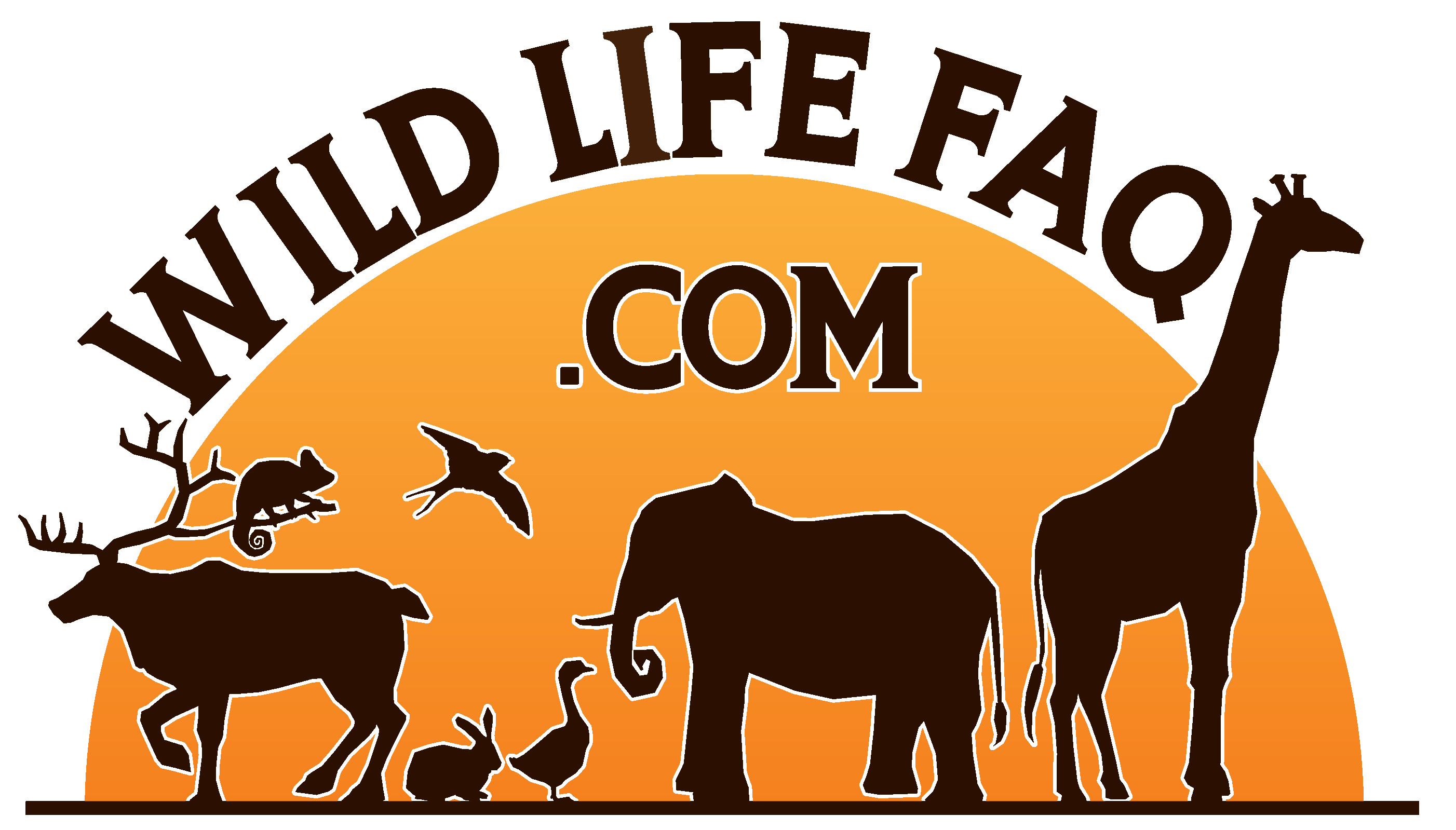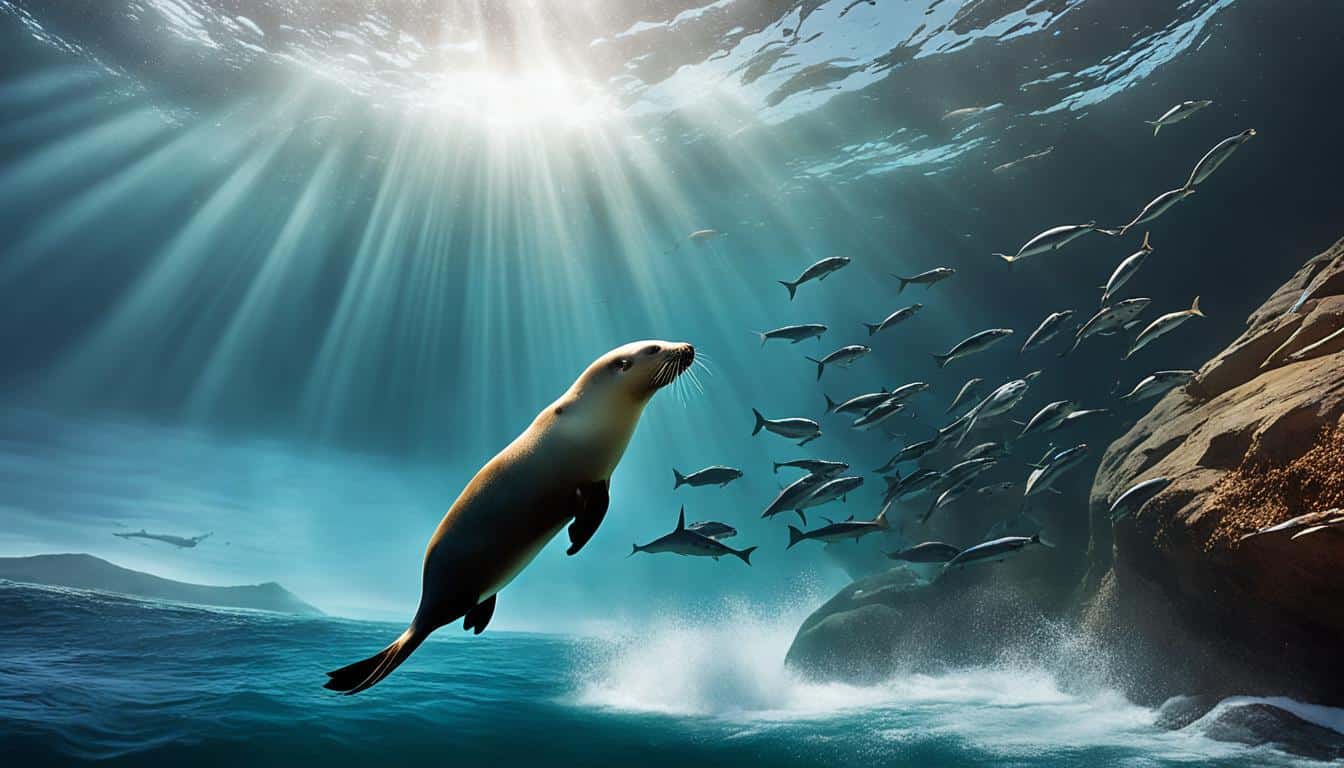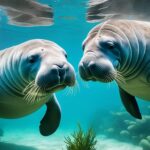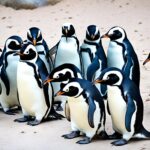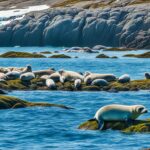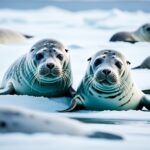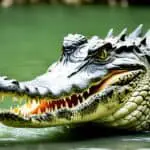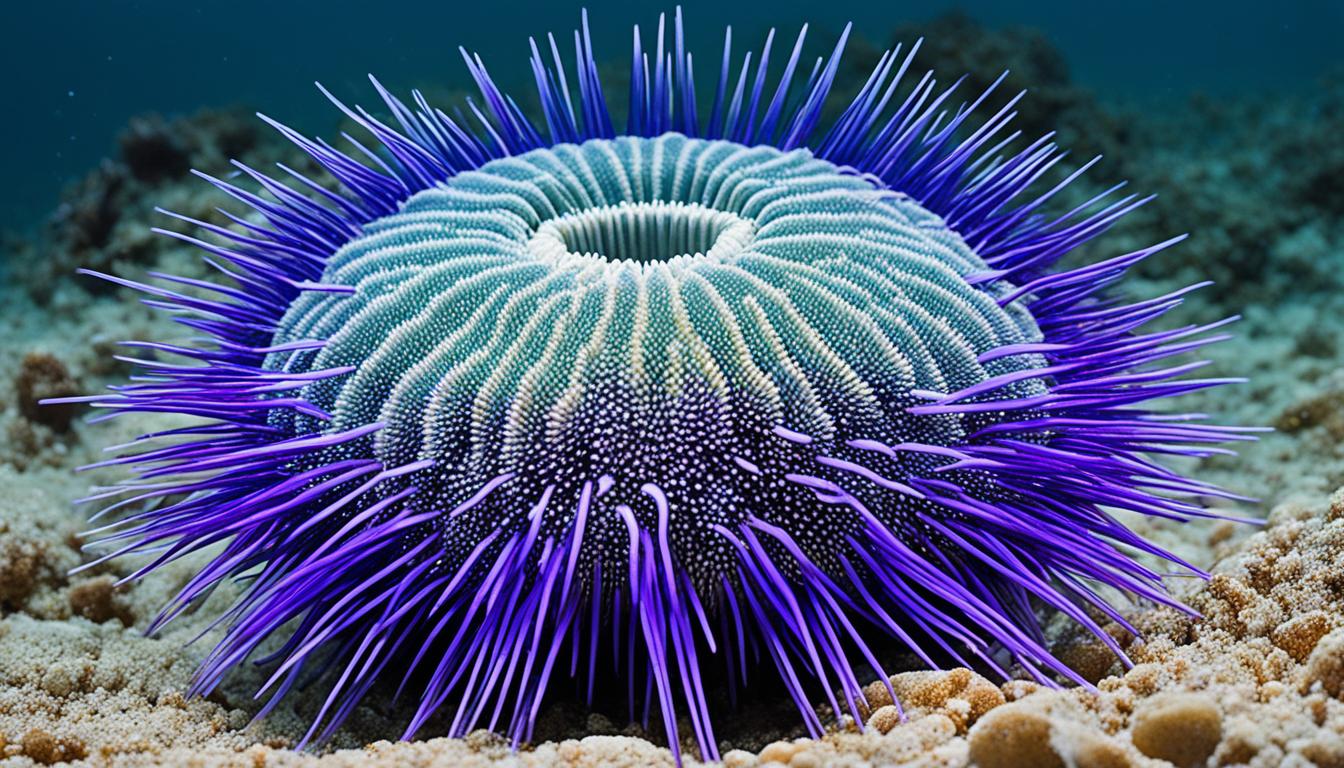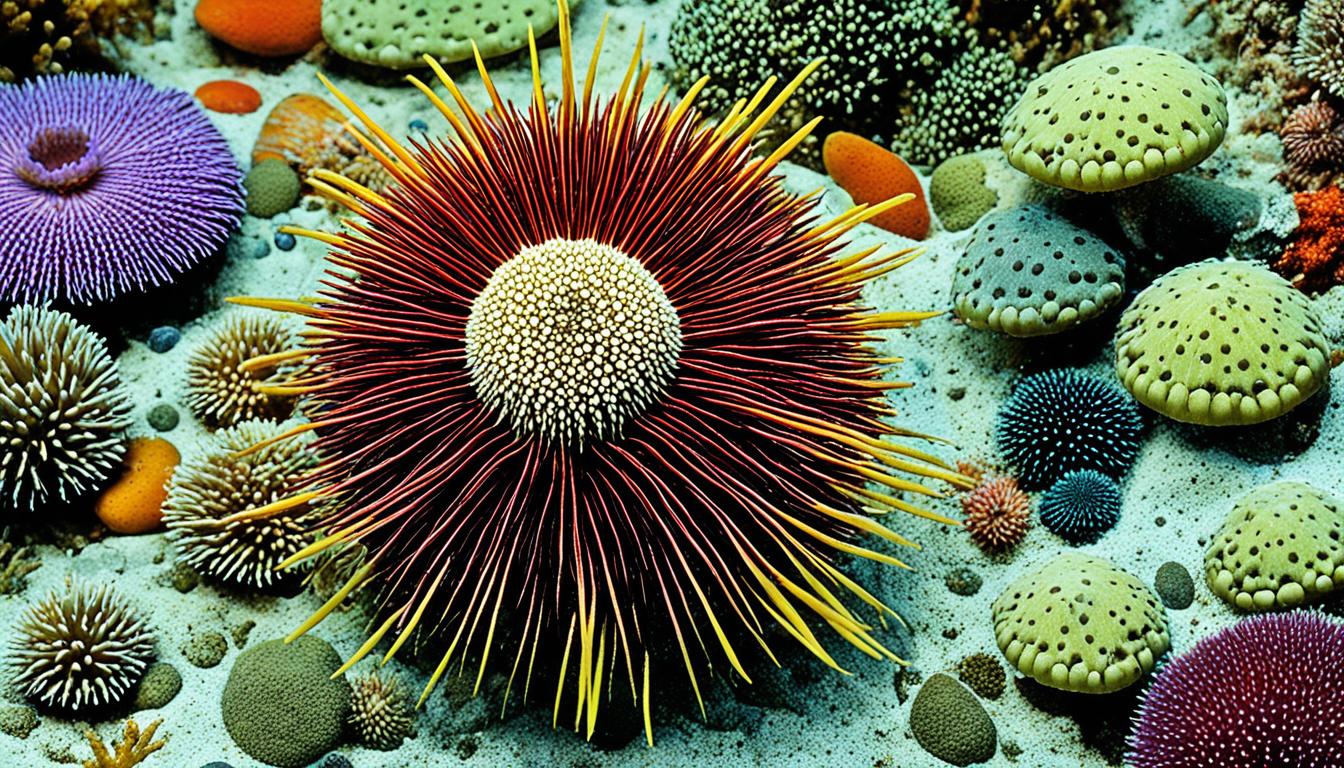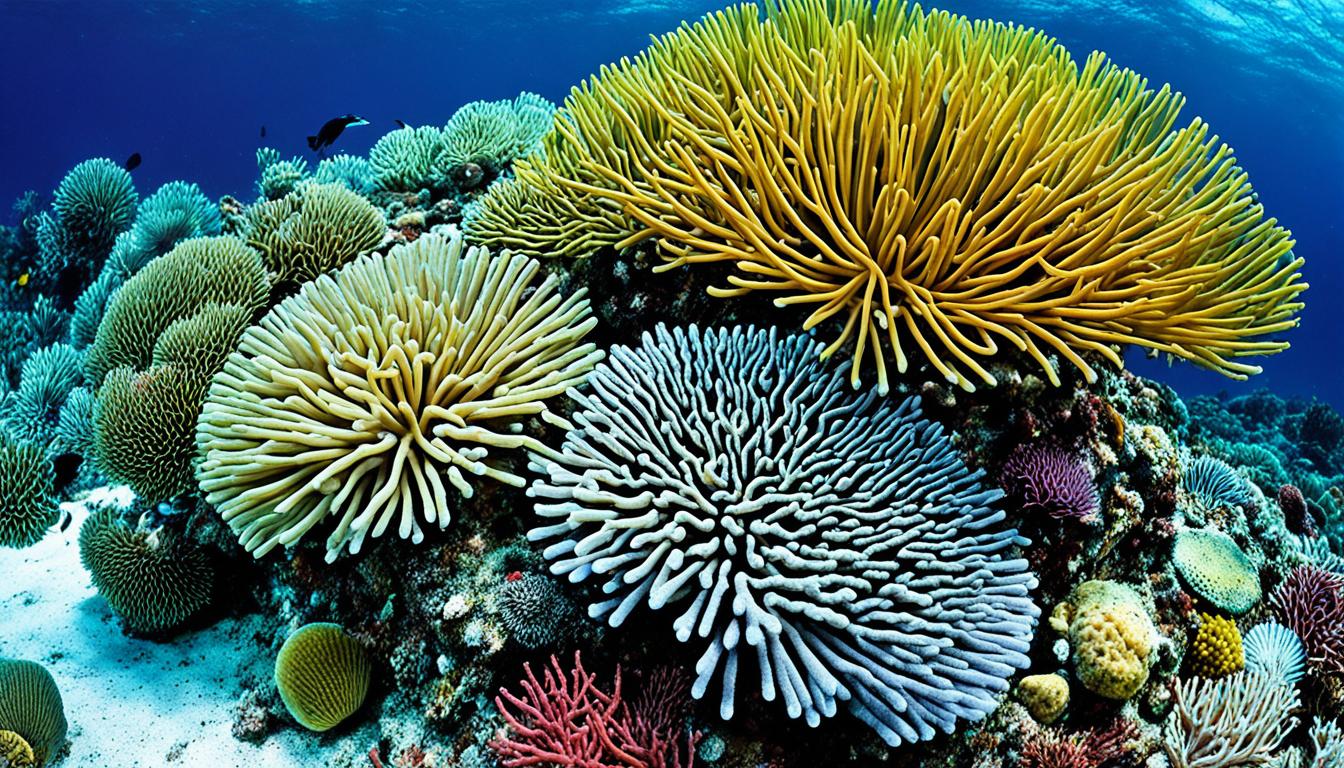Sea lions are amazing marine mammals known for their hunting skills. You might ask, how do sea lions find their food? These agile hunters use smart techniques to catch their prey. California sea lions love to eat fish and cephalopods, like squid and octopus. They also enjoy herring and salmon.
Their hunting ways show how important they are in their ecosystem. But, they face challenges from commercial fishing that affects their food supply.
Sea Lion Hunting Behavior
Sea lions have fascinating hunting ways that show how they play a big role in their ocean homes. They are very adaptable, living in many types of marine places. Their hunting shows off their strength and how they work together.
Characteristics of Sea Lions as Predators
Sea lions are opportunistic hunters with key traits that help them hunt well:
- Streamlined Bodies: Their bodies are made for fast swimming, helping them catch quick prey.
- Social Hunting: They hunt together, using teamwork to trap their food.
- Diverse Foraging Techniques: They use different hunting styles, like surprise attacks and chasing, to get food.
- Excellent Divers: They can go really deep, up to 600 feet, to find more food.
These traits help them pick the right prey and adjust their hunting. It shows how they play a key part in keeping the ocean healthy.
| Characteristic | Description | Benefits for Hunting |
|---|---|---|
| Body Structure | Streamlined and muscular | Facilitates speed and agility |
| Social Structure | Often hunts in groups | Increases efficiency through teamwork |
| Diving Ability | Can dive deep (up to 600 feet) | Access to a wider range of prey |
| Foraging Skills | Utilizes varied techniques | Enhances adaptability to different prey types |
How do sea lions hunt for food?
Sea lions have amazing hunting skills that help them survive in the ocean. They use special hunting strategies to find food successfully.
Foraging Techniques
Sea lions have many ways to find food. They can dive deep alone or with others. They chase prey fast or sneak up on it.
They often hunt together, working as a team. They herd fish into groups, making it easier to catch. This teamwork shows how smart they are at hunting.
Use of Vibrissae
Sea lions use their whiskers, or vibrissae, to hunt. These whiskers feel vibrations in the water, helping them find prey in cloudy water.
With their good eyesight and whiskers, sea lions can hunt well in different conditions. Their whiskers are key to finding prey in dark or rough waters.
Sea Lion Feeding Habits
Sea lions’ eating habits are key to their survival. They change based on where they live and what’s available to eat. Knowing what they eat helps us understand their role in nature and how they behave.
Diet Overview
Sea lions eat a mix of marine life. Their diet includes fish, squids, crabs, and clams. They prefer over 50 different species like squids, hake, and anchovies. This variety helps them survive changes in their environment.
Feeding Frequency and Quantity
Adult California sea lions eat about 5% to 8% of their body weight each day. That’s around 6.8 to 18.2 kilograms (15-40 pounds) of food. During breeding seasons, their eating habits change a lot.
Males might not eat for weeks to protect their territory. Knowing this helps us protect these amazing creatures.
Sea Lion Prey Selection
Sea lions adapt to their environment by choosing what to eat. Their choices depend on many factors influencing prey choice. These include the types of fish available and the effects of commercial fishing.
Factors Influencing Prey Choice
Sea lions mainly pick their prey based on what’s available. They target fish during certain seasons. They eat:
- Anchovies
- Herring
- Salmon
- Squid
Other predators and the sea lions’ own preferences also affect their prey. These can change with age, size, and experience. This leads to different hunting methods among sea lions.
Impact of Commercial Fishing
Commercial fishing greatly affects sea lion prey selection. Overfishing reduces their favorite foods like anchovies and herring. This makes them change their hunting, sometimes eating less common fish or even their own young.
In some cases, sea lions may enter fishing areas, leading to conflicts with humans.
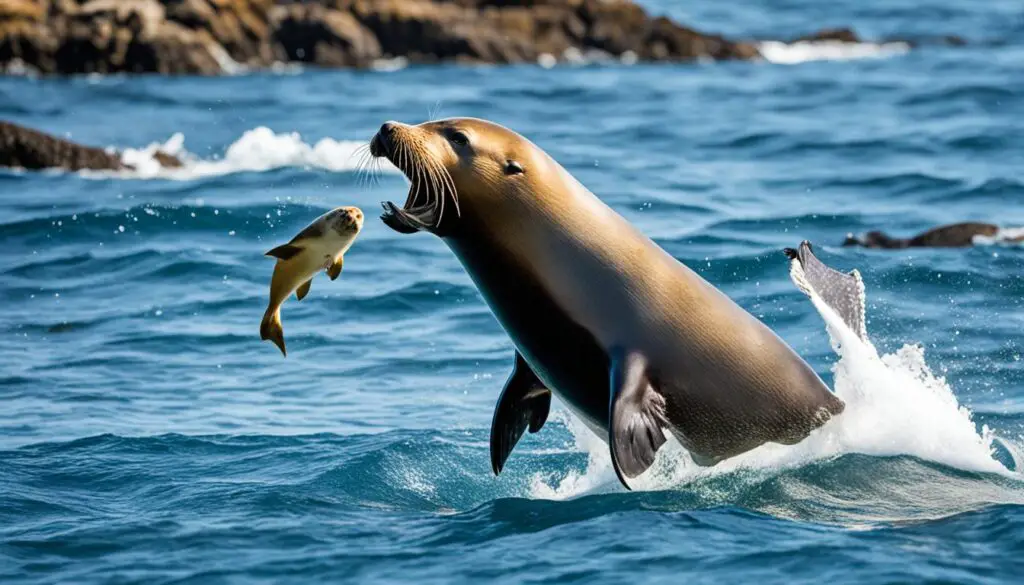
| Prey Species | Habitat Type | Availability (Season) | Commercial Fishing Impact |
|---|---|---|---|
| Anchovies | Coastal waters | Spring to Summer | High |
| Herring | Open ocean | Winter to Early Spring | Moderate |
| Salmon | Rivers and coastal areas | Late Summer | Variable |
| Squid | Deep waters | Year-round | Low |
These facts show how sea lion prey selection changes with the environment and human actions.
Unique Hunting Techniques of Sea Lions
Sea lions have many special ways to hunt, showing their smartness and adaptability. They use tools like stones to open hard shells of clams. This shows how they use their brains to get food in their ocean world.
Sea lions also have smart ways to catch fish. They flip fish in the air to make them easier to eat. This trick helps them catch slippery fish and shows their cleverness.
Sea lions also play with their food before eating it. This play helps them get their food ready for swallowing. It shows how they use fun and strategy to hunt.
These hunting methods help sea lions survive in different ocean places. They change their fishing ways based on where they are. This shows how smart and resourceful they are, making them great hunters in the sea.
| Hunting Technique | Description |
|---|---|
| Tool Use | Utilizing stones to crack open hard-shelled prey like clams. |
| Prey Manipulation | Flipping fish to achieve an optimal feeding position. |
| Playful Interaction | Engaging in play to orient prey for easier swallowing. |
| Strategic Hunting | Employing various techniques based on prey type and environment. |
Conclusion
Learning how sea lions hunt is key to understanding their role in marine ecosystems. Their hunting skills show amazing adaptations. These help them survive and affect the marine species they hunt. By studying their foraging, we learn about the health of marine environments.
Sea lion hunting is important for more than just their survival. It affects the marine ecosystem in big ways. It changes prey populations and impacts the entire food web. Knowing about these effects helps us see the challenges sea mammals face from environmental changes and human actions.
It’s crucial to protect sea lions and their homes to keep ocean ecosystems balanced. Understanding sea lion hunting helps us value their lives. It also shows how important they are in keeping our oceans diverse.
